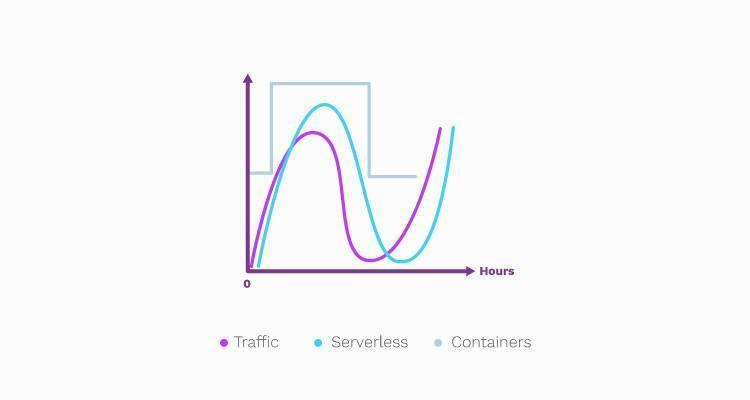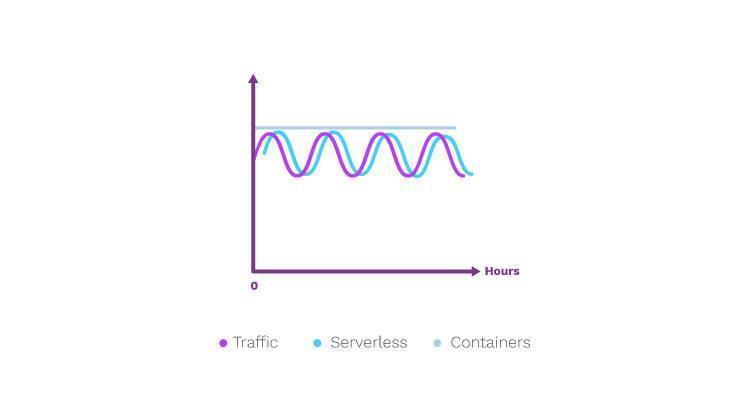Companies looking for a cloud solution that allows them to write and deploy code quickly without having to worry about infrastructure will find an ideal alternative in serverless computing. But, that’s not the only option available. Other companies may find that containers offer similar levels of flexibility without as many of the restrictions that come with serverless. As we know, no solution is perfect, so we’ll walk you through the process of choosing the best solution.
Serverless is one of the fastest growing cloud services boasting a 75% growth rate in 2018, according to RightScale’s State of the Cloud report. And, companies are actively driving the growth of this cloud service; 50% of companies are using serverless and 28% are planning to do so in 2018. Pretty impressive considering the concept is relatively young in terms of being commercially viable.
Then, there is containerization, which is essentially a way to package an application, is often presented as an alternative option to serverless and viewed as the future of cloud. It also enjoys a fast growing market, achieving 40% growth from 2016 to 2017 and predicted to exceed that in coming years, and considering IBM’s acquisition of Red Hat for a whopping $34 billion, is a technology companies should definitely be paying attention to.
Before opting for one or other, it’s important to understand each service’s pros and cons.
What Is Serverless?
In very simple terms, “serverless computing is a cloud computing service that simplifies code deployment by running snippets of back-end code that developers write for a single short-lived task or function.” As a result, you only use the exact amount of resources needed to complete a task and only pay a fraction of the cost every time the task is performed. The interesting part is that “serverless” computing isn’t completely serverless. While there is a server involved, it’s run by a cloud provider and not your team. You can access serverless computing from several cloud providers including Google Cloud Platform, IBM Cloud Functions, AWS, and Microsoft Azure.
Why go serverless?
The first and most attractive benefit of going serverless is cost savings. Because you pay for exactly what you consume, you’re not liable to waste resources. This also means you can scale up or down automatically, depending on the number of concurrent users. And, because your provider takes care of infrastructure, managing capacity and avoiding downtime, your team will spend a lot less time managing servers. It also allows you to accelerate development times and reduce time-to-market, as developers can quickly upload one function at a time—or all their code at once—as they see fit.
A few of the downsides of serverless are latency issues caused by servers sitting cold until they’re called upon by an application, as well as vendor lock-in. Since your vendor is taking care of so many aspects, changing providers would require significant changes to your code base and cost you a lot of time and money. Serverless also means you don’t have as much control over the server, which can be counterproductive to some projects.
[NEARSHORE SOFTWARE DEVELOPMENT | Perficient Latin America is ready. Call us today]
What are containers?
Containers, on the other hand, are lightweight and stand-alone executable packages of a piece of software that includes everything you need to run it: code, runtime, system tools, system libraries, and settings. This means you can move software from one computing environment to another and have it run effectively.
Why use containers?
The main advantage of containers is portability, so you can bundle your application and all its dependencies into a package and run it regardless of the computing environment. This allows teams to retain a level of flexibility and still be vendor agnostic. Additionally, containers give teams total control over their application; meaning they manage all resources, policies, and processes. However, containers require much more time and work to set up. Changes in code mean having to repackage the container and make sure the ecosystem communicates correctly before deployment. They’re also typically more expensive to run than serverless computing.
[ READ MORE: Multi-cloud Strategies Are on the Rise ]
Choosing the right cloud computing service
Ultimately, the decision of whether opting for serverless or containers comes down to your application’s specific needs. While serverless may seem more cost-effective, if your application requires a huge amount of functions, it could end up being more expensive than using containers. Similarly, building containers for a very simple application with few users is a lot more costly. Each individual project calls for an in-depth study. But there are a few things to keep in mind to arrive at a cost model approximation:
Vendor pricing
Serverless is ideal for applications that execute simple CRUD-style operations, and vendors will charge a fraction of a dollar every time a function is called on by a user. However, if your application requires a large quantity of functions and will call upon several services every time a function is executed, the price can easily surpass that of a container.
Overhead costs
Another thing to factor in is the cost of keeping your systems running smoothly. For more hands-on projects, you may need to hire someone to take care of server needs or to monitor your container ecosystem. Serverless would eliminate the cost of maintaining a server, but you may still need to employ someone with a good handle on serverless management to make sure functions are optimized.
Utilization
A lot of the work behind determining when one service is more cost efficient than another comes down to determining how to optimize hardware usage. Understanding the point where one solution becomes more viable than another will largely depend on what functions are being called on and the expected traffic in a given time frame.
For example:

In an application with drastic fluctuations in traffic, serverless computing (blue) will reflect the number of users served at every point in time and charge accordingly. Containers (gray), on the other hand, may require you scale capacity by doubling at a certain point. This means that costs will double during a traffic peak and you’re likely to pay for unutilized resources.

On the other hand, if your application has regular traffic fluctuation, you could easily cover these needs with a fixed container model (gray) as opposed to an ever-changing serverless (blue) one.
Hybrid structures
You may also consider enabling some serverless functions and some container-enabled ones instead of opting for one or the other. With this approach, you get the best from both worlds and arrive at a cost-effective solution, optimizing performance and giving teams the right amount of control over their project.
Often, high cloud costs are related to not fully understanding a cloud providers setup rather than the expense of the technology implemented. Having a team member that understands your cloud computing alternative best will go a long way in managing systems, keeping costs down, and achieving optimal results. An ideal way to leverage resources is to find a software outsourcing partner with this expertise.
The right offshore software development team can help you take your cloud computing to the next level, accelerate time-to-market, and manage your application’s needs efficiently. At Perficient Latin America, we work as a trusted nearshore outsourcing partner with several international companies to leverage cloud technologies. Our team of highly skilled experts in cloud computing, DevOps, and more help our clients design complex systems that allow them to leverage cutting edge technology and deliver world-class solutions.
—
Reap the benefits of your serverless or container-enabled applications! Call Perficient Latin America.

